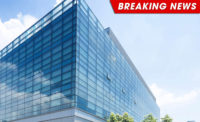Sustainability of Metal Again a Hot Topic at METALCON

Metal construction products offer many advantages. Metal roofing, metal walls, metal framing and studs, all bring durability and economic benefits to any project. Metal is where it’s at and METALCON is where you find it.
METALCON 2022 is the place to learn about all of the benefits provided by the widest array of metal construction products under one roof. METALCON is scheduled for October 12-14 at the Indiana Convention Center in Indianapolis.
Sustainability is a word that gets tossed around plenty by those promoting metal construction products. Though it’s a vague term, it does a great job of blanketing the long list of benefits provided by metal construction products. Sustainability experts at companies exhibiting and/or speaking at METALCON shared their thoughts on metal and sustainability.
Lee Ann Slattery, FCSI, CDT, CCPR, LEED AP BD+C, Sales Support Manager at ATAS International, Allentown, Pa.
“Metal is a durable and resilient choice for roofs and walls,” Slattery says. “It performs well in high wind events, occurrences of hail and in wildfire prone areas of the country. Steel and aluminum are typically manufactured with recycled content and are fully recyclable at the end of a long service life.
“Standing seam metal roofing is the best choice for a roof over which solar PV panels are installed. With the use of special clamps, holding PV panels to the metal roof, you won’t have roof penetrations. As well, the metal roof will far outlive the life of the PV panels, so there are no worries about having to decommission and remove the solar system to replace roof panels.”
Slattery notes insulated metal roof and wall panels (IMPs) are a top product for creating an energy efficient building as well as allowing a building to be constructed and dried-in more quickly than when using other building materials.
“Cool pigments in the paint on steel and aluminum panels help to reduce the cooling load on a building for both roofs and walls,” Slattery says. “By incorporating above-sheathing ventilation, with the creation of an air space between the metal roof panels and the roof deck, you can also help to reduce the cooling load. The space also helps to insulate the building in colder temperatures.”
Slattery says by using solar air heating metal wall panels, preheated fresh air can be brought into a building, significantly lowering winter heating costs and making a building more energy efficient.
“The bottom line is that it’s important for contractors and installers to understand the sustainability benefits of metal roofs and walls to help educate a building owner, especially a homeowner who is concerned about the green building product for their home,” Slattery says. “They should also be aware of construction site separation of materials to be recycled, to ensure that all metal scrap is dealt with in a sustainable manner.”
Alan Scott, FAIA, LEED Fellow, LEED AP BD+C, O+M, CEM, WELL AP, the Director of Sustainability, Intertek
“Long-lived roofing and cladding amortizes its own lifecycle impacts over a longer period of time and protects the rest of the structure, reducing its lifetime embodied carbon impacts,” Scott says. “Properly designed and installed metal siding and roofing systems can enhance the resilience of structures subject to wildfire and other extreme weather risks.
“Finally, when it does reach the end of its useful life, it is easily recyclable. This is important given the trend toward extended producer responsibility. Despite these benefits, steel is still a material with a high embodied carbon and it is critical for producers to seek renewable energy innovations to reduce this impact and more manufacturers to favor producers investing in this type of innovation.”
Scott says designers need to know the sustainability benefits of metal roofing and cladding so they can design a system that is easily installed correctly. “Any problem with the installation leads to a weak point in the system,” he says. “It’s all about the details. Details have to be designed and installed so there is no loss in performance, which impacts sustainability.”
That means there has to be communication and coordination between the trades during the installation where pieces come together. “Some jobs involve multiple contractors working on different components, so it’s important for everyone to understand the entire system,” Scott says. “Any leaky window or faulty detail will lead to a compromise in the sustainability of the system and possibly a failure that will certainly have ecological and financial implications.
Scott also says buildings, generally, are constructed to last a long, long time. “Occasionally, a building will outlive its usefulness and need to be torn down or disassembled," he says. “It’s important to take that into consideration during the design and construction so that metal and other components can be separated and recycled, extending the lifecycle sustainability benefits."
Lori Reynolds Morrow, LEED Green Associate, Architectural Project Manager at Sheffield Metals, Sheffield Village, Ohio
“The sustainable benefits of the recyclability of metal roofs and walls is evident both when first producing the metal, typically using about 25 percent post-consumer content,” Reynolds Morrow says. “Then, at the end of the roofs’ and walls’ useful life, that very same metal returning as 100 percent recyclable material. Steel is the most recycled material in the world, with now more than 80 million tons recycled every year in the United States alone. When producing aluminum from recycled aluminum, the process needs only 5 percent of the energy that would be required if producing the aluminum from the raw material of bauxite ore.”
Reynolds Morrow points to a recently released Service Life Assessment by the Metal Construction Association that determined the expected service life of 55 percent Al-Zn Alloy coated steel (Galvalume) to be in excess of 60 years, using best practices.
Looking for a reprint of this article?
From high-res PDFs to custom plaques, order your copy today!




